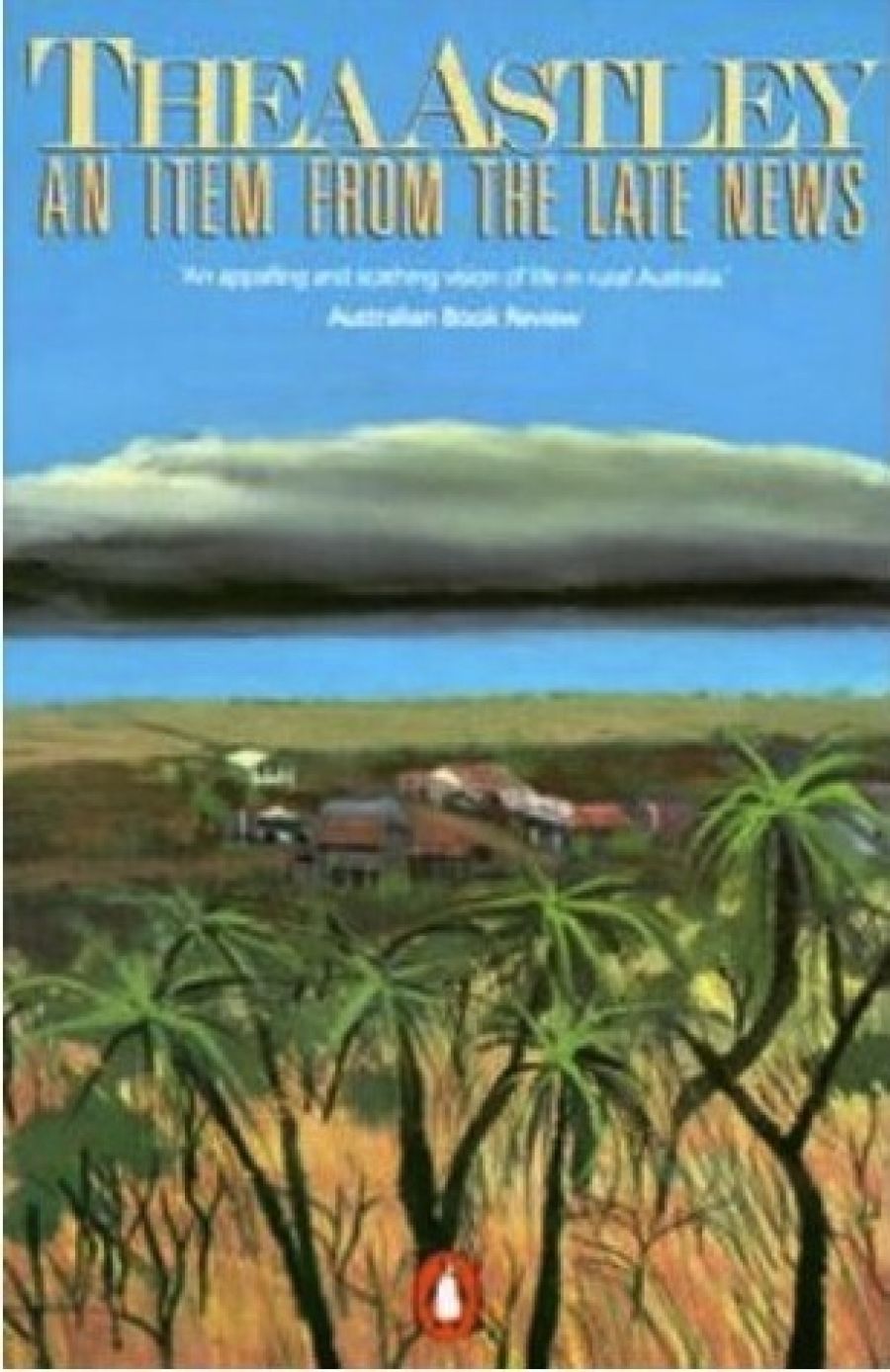
- Free Article: No
- Contents Category: Fiction
- Review Article: Yes
- Online Only: No
- Custom Highlight Text:
Returning to live in Queensland seems to have done something to Thea Astley’s perception of Australian country life. In this novel, as well as in her previous one, A Kindness Cup, she gives as appalling and scathing a vision of life in rural Australia as has come from any novelist since Barbara Baynton. Although her prose is as bitingly astringent as ever in this book, it lacks the sardonic humour of her recent collection of short stories Hunting the Wild Pineapple. The pessimism and anger are almost unrelieved.
- Book 1 Title: An Item From the Late News
- Book 1 Biblio: UQP, 200 pp, $12.95 pb
Unlike A Kindness Cup, this novel is set in the present and is told by a first-person narrator, Gabriel Jerrold, a woman in her early twenties who was witness to most of the events she recounts and who has returned to the tiny town of Allbut to remember and to attempt to expunge her own guilt. In other respects, though, the two novels are strikingly similar. An Item From The Late News even has the singer Gracie Tilbum, who is mentioned as a visitor to the town in the past, and who is one of the important subsidiary characters in the earlier novel.
The novel tells the story of a man named Wafer, who had witnessed his father being blown to pieces by a bomb when he was a child, who comes to Allbut, builds himself a bomb shelter and attempts to lead a peaceful life on the outskirts of the town. The hostility the citizens of Allbut feel instinctively towards him breaks out into the open when they discover that he has casually picked up a large and valuable sapphire and is unable (or, as they believe, refuses) to disclose where he discovered it.
Slowly, the novel builds towards its inevitable violent climax while the narrator, jealous of Wafer’s love for a fourteen-year-old girl named Emmie, refuses to intervene and save him. The ending is completely pessimistic. Wafer’s name may suggest that his sacrifice has some redemptive quality (there are several references in the novel to the sacrament of communion) but nothing else in the novel bears this out.
As in A Kindness Cup, the strong characters are evil bullies while the other exhibit at most a kind of weak tolerance, a tepid goodwill which crumbles under even the slightest pressure. There are portraits of strikingly similar sadistic policemen in both novels and in addition in this one a brilliant study of a psychopath named Moon.
Astley’s prose is simple but effective. The dust jacket makes mention of ‘a fabulous array of myths ... giving the novel unusual resonance and power’ but successive readings of the novel have not revealed these for me. Certainly, there are mentions of Eldorado, the Odyssey, Eden, Job, Pilate and so on, but if this is what is meant they are casual citations only, not worked into the text in the way that, say, White uses The Odyssey in The Aunt’s Story. The events take place against the ironical background of Christmas, just as A Kindness Cup uses the New Year; Moon utters cryptic Spanish phrases; and the characters all have unusual names – Jam, Brim, Sergeant Cropper, a mad Aunt Clancy. Gabby herself is no doubt a failed (and not quite convincing) Archangel, even as she gives vent to Astley’s scorn of Australian male institutions such as sport, beer, drinking, and mateship.
The strength of the novel, though, lies not in the allusiveness of the prose but in the strength and directness of the narrative. I found it so disturbing and distressing that frequently I had to put the book down for a while before returning to it. Impure or, in Joyce’s terms, kinetic art? Certainly, but utterly gripping. It could even lead to a new line in dust jacket blurbs: ‘So compellingly readable I couldn’t pick it up.’


Comments powered by CComment